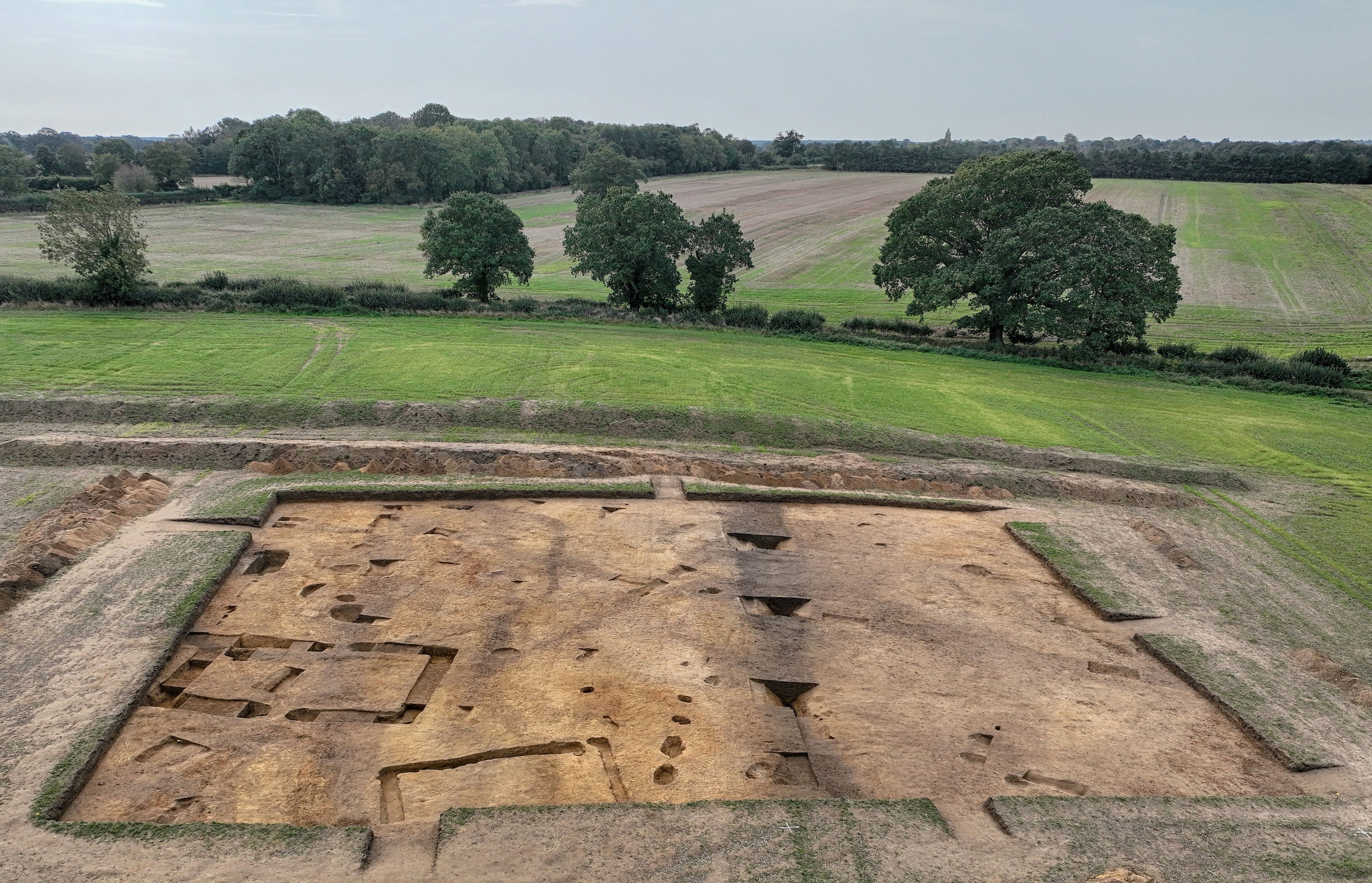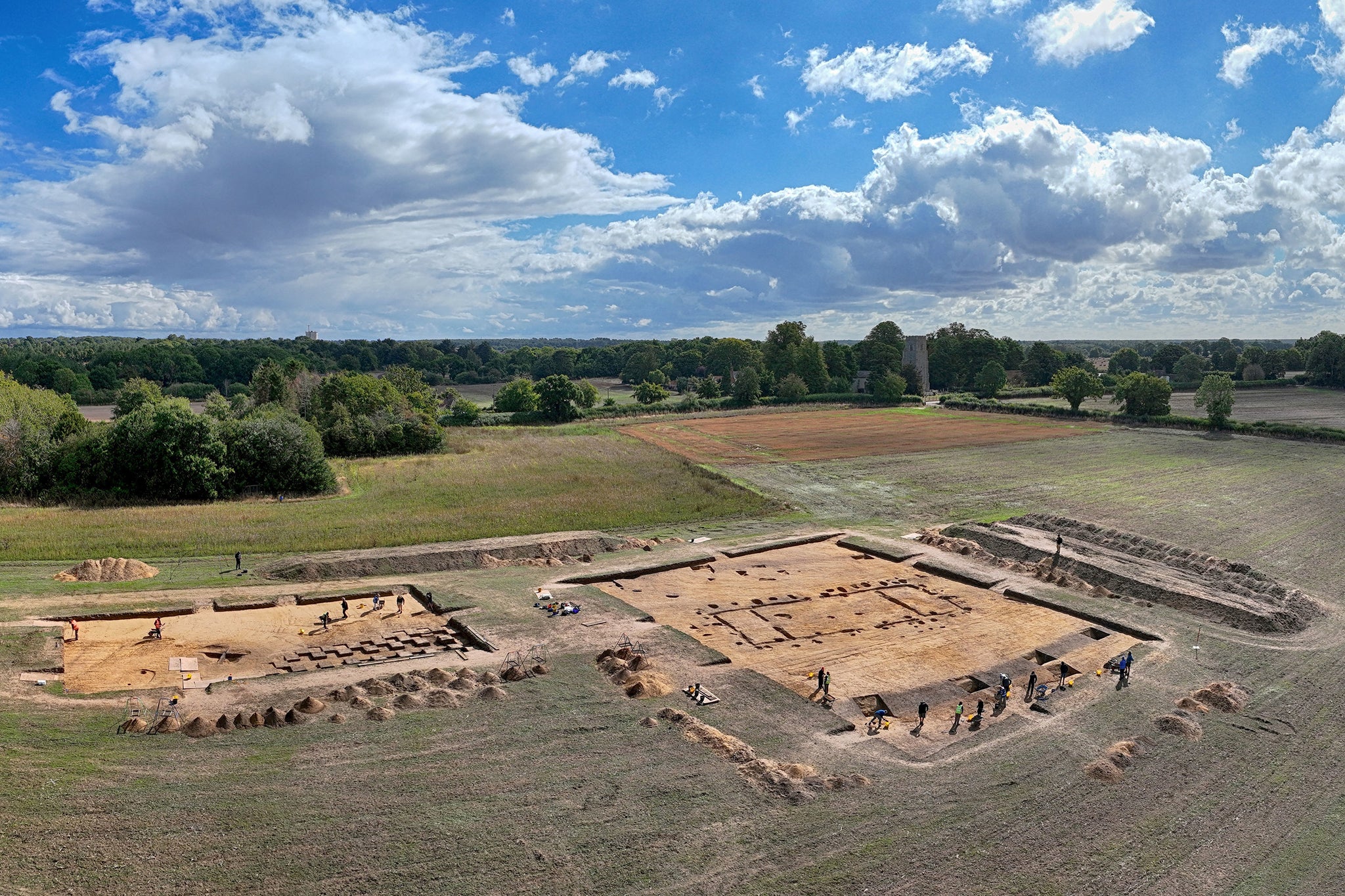‘Lost temple’ from 1,400 years ago found underneath farm in Suffolk
Farmland near Sutton Hoo was once settlement of East Anglian kings
Your support helps us to tell the story
From reproductive rights to climate change to Big Tech, The Independent is on the ground when the story is developing. Whether it's investigating the financials of Elon Musk's pro-Trump PAC or producing our latest documentary, 'The A Word', which shines a light on the American women fighting for reproductive rights, we know how important it is to parse out the facts from the messaging.
At such a critical moment in US history, we need reporters on the ground. Your donation allows us to keep sending journalists to speak to both sides of the story.
The Independent is trusted by Americans across the entire political spectrum. And unlike many other quality news outlets, we choose not to lock Americans out of our reporting and analysis with paywalls. We believe quality journalism should be available to everyone, paid for by those who can afford it.
Your support makes all the difference.The remains of a possible temple from 1,400 years ago have been discovered on private farmland near Sutton Hoo.
Suffolk County Council said the remains of a large timber royal hall were uncovered at Rendlesham last year, confirming the spot as a settlement of the East Anglian kings.
It said digs this year found evidence of fine metalworking associated with royal occupation, including a mould used for casting decorative horse harnesses similar to those known from nearby Sutton Hoo.
The compound at Rendlesham was found to be more than twice the size previously thought, bounded by a 1.5km-long perimeter ditch enclosing an area of 15 hectares – the equivalent of about 20 football pitches.
The royal residence was part of a wider settlement complex covering 50 hectares which is unique in the archaeology of fifth to eighth century England in its scale and complexity, the council said.

The longship burial at Sutton Hoo, around four miles from Rendlesham, is thought to be the final resting place of King Raedwald, who ruled in the seventh century.
The site at Rendlesham is identified as an East Anglian royal centre by monk and historian The Venerable Bede in his Ecclesiastical History of the English People.
Bede records that King Raedwald maintained a temple in which there were altars to pre-Christian gods alongside an altar to Christ – though he does not specifically say this was at Rendlesham.
The discovery of a “possible temple” at Rendlesham was made this summer by Suffolk County Council’s Rendlesham Revealed community archaeology project, which is lottery funded.

The project’s principal academic adviser Professor Christopher Scull, of Cardiff University and University College London, said: “The results of excavations at Rendlesham speak vividly of the power and wealth of the East Anglian kings and the sophistication of the society they ruled.
“The possible temple, or cult house, provides rare and remarkable evidence for the practice at a royal site of the pre-Christian beliefs that underpinned early English society.
“Its distinctive and substantial foundations indicate that one of the buildings, 10 metres long and five metres wide, was unusually high and robustly built for its size, so perhaps it was constructed for a special purpose.
“It is most similar to buildings elsewhere in England that are seen as temples or cult houses, therefore it may have been used for pre-Christian worship by the early kings of the East Angles.”

This summer’s excavations revealed the foundations of three new timber buildings including the possible temple.
They also identified evidence of seventh century metal working, two graves of an unknown date and evidence of earlier settlement and activity from the Neolithic, Bronze Age, Iron Age and Roman periods.
Councillor Melanie Vigo di Gallidoro, Suffolk County Council’s deputy cabinet member for protected landscapes and archaeology, said: “This year’s findings round off three seasons of fieldwork which confirm the international significance of Rendlesham’s archaeology and its fundamental importance for our knowledge of early England.
“Everyone involved in the project can take pride that together we have achieved something remarkable.”
The council said the excavations are complete and trenches at the site have been backfilled, with work already underway to analyse the finds, with provisional results due next year.

Join our commenting forum
Join thought-provoking conversations, follow other Independent readers and see their replies
Comments